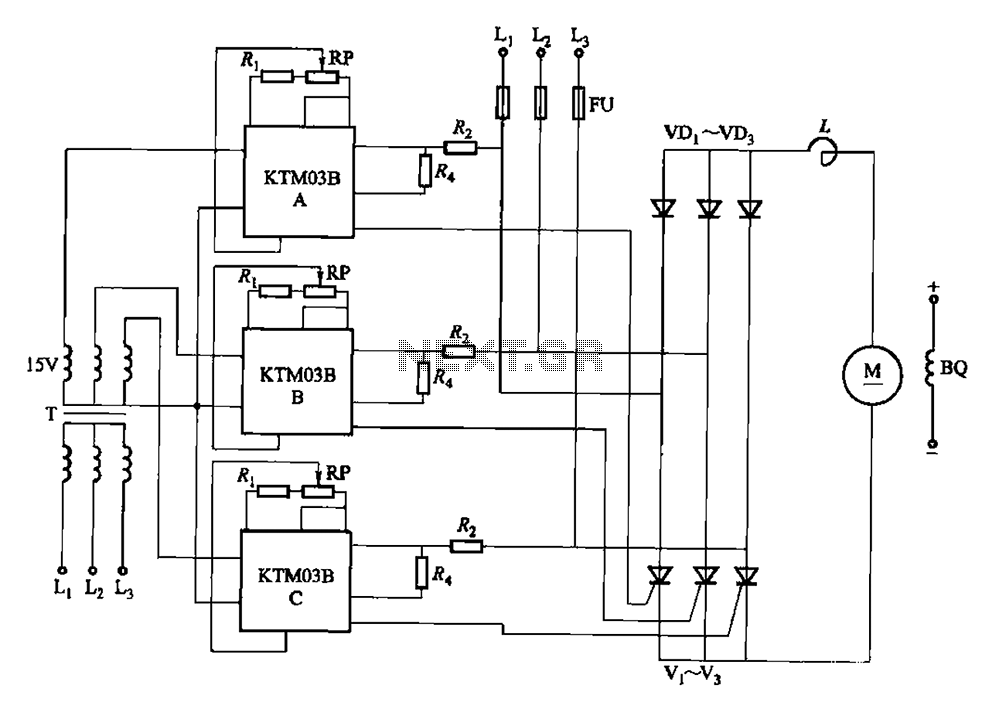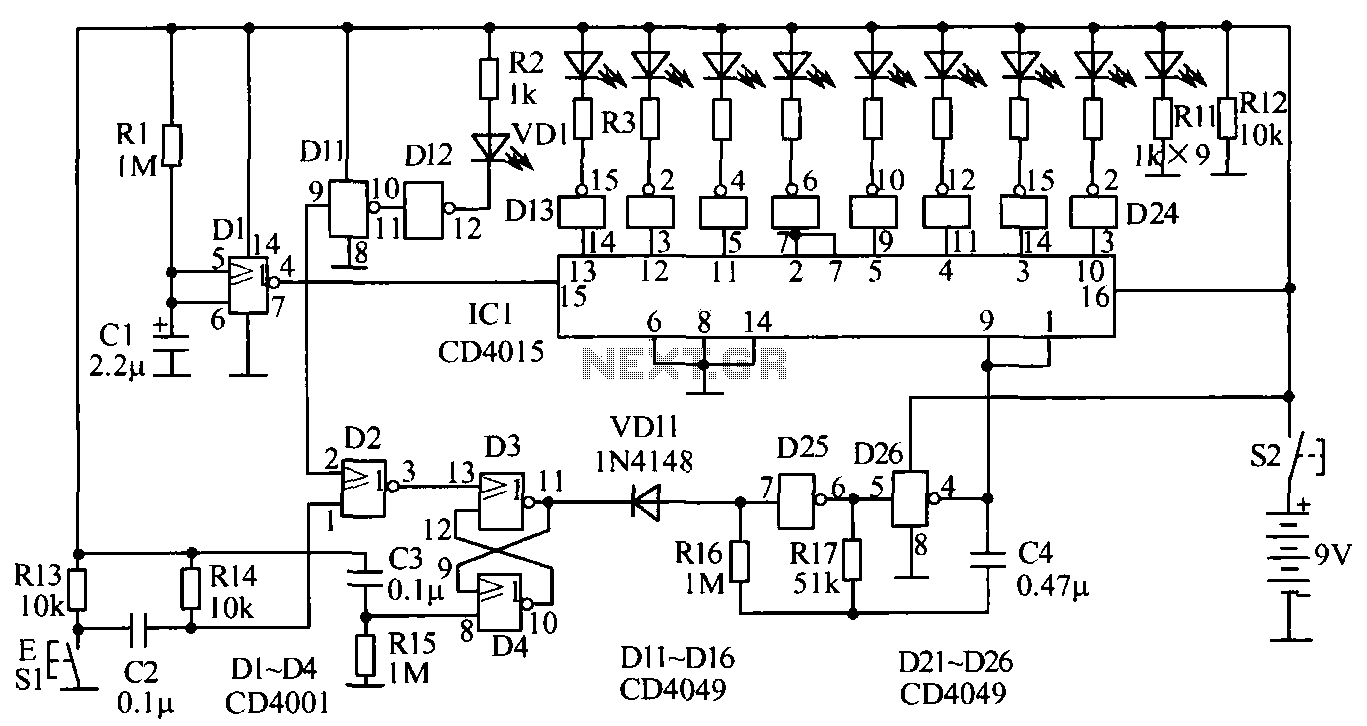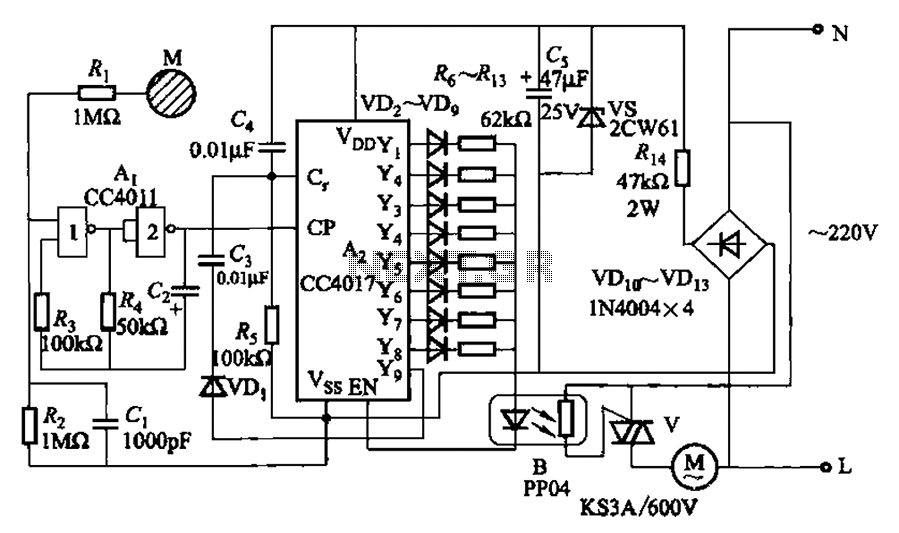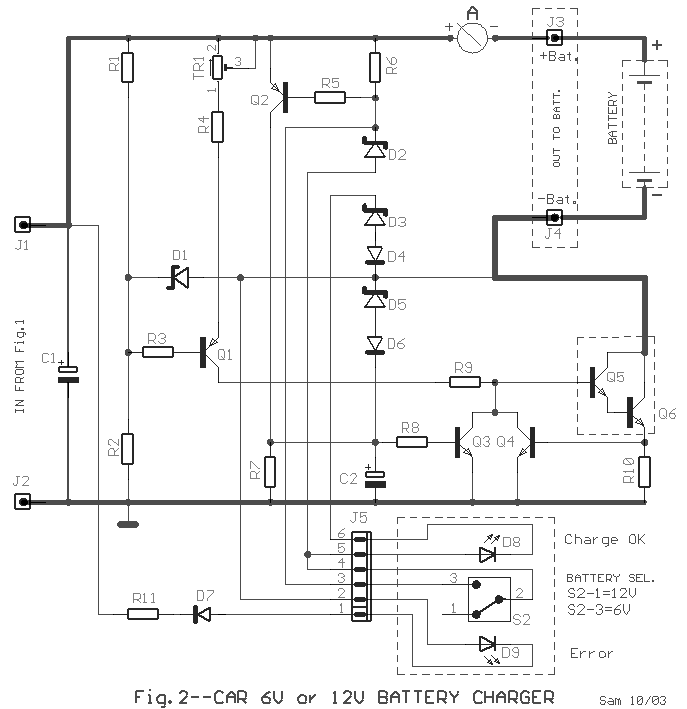
12V Speed Controller/Dimmer
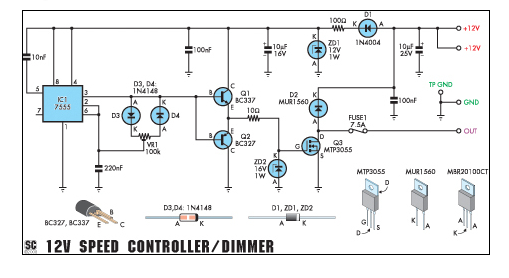
This circuit can function as a speed controller for a 12V motor with a continuous rating of up to 5A or as a dimmer for a 12V halogen or standard incandescent light.
The circuit utilizes a pulse-width modulation (PWM) technique to regulate the speed of the motor or the brightness of the light. It typically consists of a microcontroller or a dedicated PWM controller IC, a power transistor or MOSFET to handle the load, and passive components such as resistors and capacitors for filtering and stability.
For the motor speed control application, the circuit adjusts the duty cycle of the PWM signal, which effectively controls the average voltage supplied to the motor. This allows for smooth acceleration and deceleration, enhancing the motor's performance while minimizing heat generation. The circuit may include additional features such as overcurrent protection to safeguard the motor from excessive current draw.
In the dimmer application, the PWM signal modulates the power delivered to the light source, allowing for a range of brightness levels. This method is more efficient than traditional resistive dimmers, as it reduces wasted energy and heat, making it suitable for long-term use.
The circuit should be designed with adequate heat sinking for the power transistor or MOSFET, especially when operating at higher currents. Proper selection of components, including the PWM frequency, will ensure optimal performance for both motor control and dimming applications.This handy circuit can be used as a speed controller for a 12V motor rated up to 5A (continuous) or as a dimmer for a 12V halogen or standard incandescent.. 🔗 External reference
The circuit utilizes a pulse-width modulation (PWM) technique to regulate the speed of the motor or the brightness of the light. It typically consists of a microcontroller or a dedicated PWM controller IC, a power transistor or MOSFET to handle the load, and passive components such as resistors and capacitors for filtering and stability.
For the motor speed control application, the circuit adjusts the duty cycle of the PWM signal, which effectively controls the average voltage supplied to the motor. This allows for smooth acceleration and deceleration, enhancing the motor's performance while minimizing heat generation. The circuit may include additional features such as overcurrent protection to safeguard the motor from excessive current draw.
In the dimmer application, the PWM signal modulates the power delivered to the light source, allowing for a range of brightness levels. This method is more efficient than traditional resistive dimmers, as it reduces wasted energy and heat, making it suitable for long-term use.
The circuit should be designed with adequate heat sinking for the power transistor or MOSFET, especially when operating at higher currents. Proper selection of components, including the PWM frequency, will ensure optimal performance for both motor control and dimming applications.This handy circuit can be used as a speed controller for a 12V motor rated up to 5A (continuous) or as a dimmer for a 12V halogen or standard incandescent.. 🔗 External reference
Warning: include(partials/cookie-banner.php): Failed to open stream: Permission denied in /var/www/html/nextgr/view-circuit.php on line 713
Warning: include(): Failed opening 'partials/cookie-banner.php' for inclusion (include_path='.:/usr/share/php') in /var/www/html/nextgr/view-circuit.php on line 713
